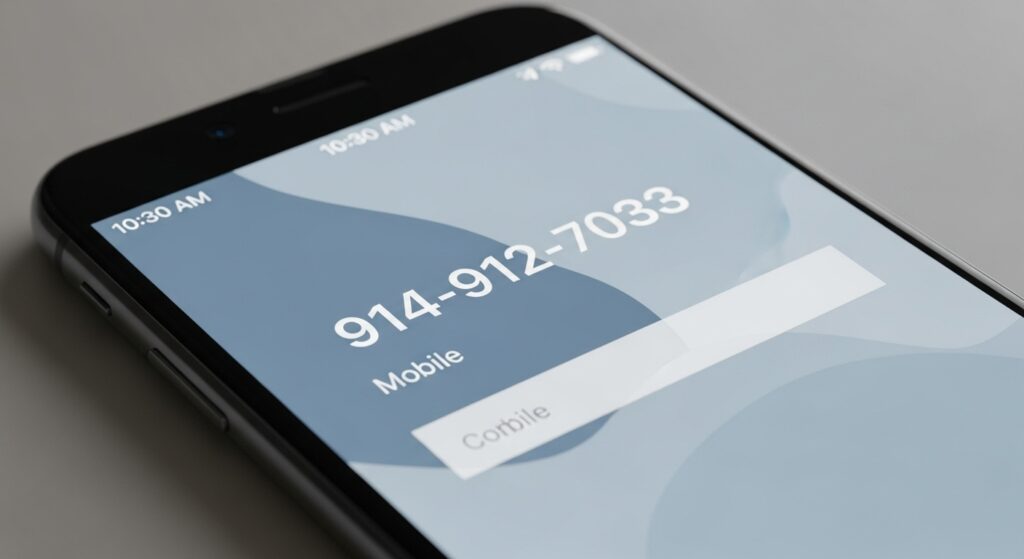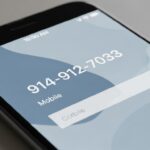In today’s hyper-connected world, numbers like 9149127033 can spark immediate curiosity—and sometimes concern. Whether it appears as a missed call, text message, or part of an online search, this ten-digit sequence has captured attention across the United States. Many people report receiving calls or texts from unfamiliar numbers such as 9149127033 and wonder: Who’s behind it? Is it a legitimate business, a scam, or simply a wrong number?
The truth is, not all phone numbers that contact us are the same. Some may be genuine service notifications, while others could be unsolicited marketing or potential fraud attempts. Understanding the story—or potential stories—behind 9149127033 can help you respond wisely and protect yourself from unnecessary risks. This article explores what’s known about this number, what you should do if it reaches you, and how to recognize safe versus suspicious communications.
By examining 9149127033 through different lenses—such as regional area codes, call patterns, and user reports—you’ll gain insight into why this number might be circulating and what steps you can take next. Let’s dive deeper into what this mysterious string of digits might signify and how to stay informed in an age where information security is more crucial than ever.
The Possible Origins of 9149127033
The first clue to understanding 9149127033 lies in its area code. The 914 area code is assigned to parts of Westchester County, New York—a region known for both residential neighborhoods and thriving business hubs. Many legitimate companies, including healthcare providers, service vendors, and logistics firms, use 914-prefixed numbers to contact clients. This makes it plausible that 9149127033 could belong to a regional business or call center operating within New York State.
However, phone numbers can easily be spoofed using inexpensive online tools. Scammers frequently imitate local numbers to appear more trustworthy. The presence of a 914 area code doesn’t guarantee authenticity, and reports have surfaced about spam or robocalls originating from similar sequences. Therefore, while 9149127033 might appear local, the call could originate from anywhere in the world. Understanding this duality—legitimate versus spoofed local contact—is vital when deciding how to engage with such numbers.
Why You Might Receive a Call from 9149127033
Unsolicited calls often serve many purposes, from marketing surveys to service reminders. Some users have speculated that 9149127033 might be tied to promotional campaigns or automated systems checking active phone numbers. For example, businesses sometimes use predictive dialing to determine whether a line is still in use. If you answer and hear silence before a connection, that may indicate an automated system testing responsiveness.
Another explanation could involve scam operations. Fraudsters frequently use random number lists to attempt phishing or social engineering. They might pretend to represent financial institutions, delivery services, or even government agencies. If you receive a call from 9149127033 requesting personal data or payment verification, it’s best to pause and verify through official channels before responding. Simple caution can prevent significant risks.
Common User Reports and Online Feedback
Across review platforms and community forums, users often share their experiences with specific numbers, and 9149127033 is no exception. Some have reported repeated missed calls with no voicemail, suggesting potential spam or robocall behavior. Others noted that the caller hung up immediately after answering—a classic sign of auto-dial testing. These collective experiences can provide valuable context, helping new recipients decide how to respond.
Still, not every report paints the number in a negative light. A handful of users have suggested that 9149127033 might be linked to customer support follow-ups or local service confirmations. As communication technologies evolve, automated notifications are increasingly common. Therefore, while caution is warranted, it’s also possible that such calls serve legitimate business purposes. Checking verified directories or contacting the company directly can help clarify the nature of any unfamiliar call.
How to Verify the Legitimacy of 9149127033
When you encounter 9149127033—or any unfamiliar number—the first step is verification. Reverse phone lookup services, such as Whitepages or TrueCaller, can reveal whether the number is registered to a known business. These databases often provide additional context, including user reviews, spam risk levels, and potential geographic details. Conducting a quick search before returning a call can save time and protect personal data.
Beyond lookups, consumers can also leverage official resources. The Federal Communications Commission (FCC) and Federal Trade Commission (FTC) both encourage individuals to report suspicious calls. If 9149127033 appears repeatedly or engages in deceptive behavior, filing a report may help authorities track broader patterns. Digital literacy begins with small, proactive steps—each contributing to a safer communication environment for everyone.
The Rise of Caller ID Spoofing and Numbers Like 9149127033
Caller ID spoofing has grown into a multi-billion-dollar challenge in the telecommunications industry. By disguising their true identities behind numbers such as 9149127033, bad actors can appear local and credible, increasing the likelihood that recipients will answer. The FCC estimates that Americans receive billions of robocalls every month, many leveraging spoofed IDs. Recognizing these patterns can help consumers identify red flags early.
For instance, if 9149127033 calls you multiple times within a short span, it could indicate automated dialing. Another warning sign is when the caller avoids identifying themselves or pressures you for immediate action. To safeguard against such tactics, experts recommend blocking and reporting suspicious numbers and enabling spam protection tools on your smartphone. These measures reduce exposure and support carrier efforts to filter fraudulent traffic.
Safety Steps to Take If Contacted by 9149127033
If 9149127033 attempts to reach you, take a measured approach. Avoid sharing any personal details, including addresses, account numbers, or social security information. Instead, hang up and assess the call’s legitimacy using trusted online tools. If the number claims affiliation with a known company, contact that organization directly using their verified public contact information—not the one provided by the caller.
Additionally, keep a record of unusual calls, texts, or voicemails from 9149127033. This documentation can prove useful if you later file a report. You can also register your phone number with the National Do Not Call Registry, which helps minimize unwanted marketing calls. While not all spam is preventable, maintaining awareness and acting promptly can significantly reduce potential risks.
The Broader Impact of Numbers Like 9149127033 on Digital Trust
Incidents involving unverified numbers like 9149127033 erode public trust in telecommunications. Many consumers have stopped answering calls altogether, fearing scams or identity theft attempts. This behavior, while protective, also disrupts legitimate customer service efforts. Businesses and regulators alike are working to rebuild confidence through stronger verification systems and call authentication protocols.
Emerging solutions such as STIR/SHAKEN frameworks are helping combat caller ID spoofing by verifying call origins. As adoption grows, numbers like 9149127033 will become easier to trace, reducing opportunities for misuse. Until then, individual vigilance remains the best defense. Educated consumers are less likely to fall victim to deceptive practices, creating a safer communication ecosystem for all.
Conclusion: Staying Smart About 9149127033 and Similar Numbers
The mystery of 9149127033 reflects a much larger digital reality—one where legitimate communication and malicious activity often overlap. While the number itself may not always signify danger, the uncertainty it brings underscores the importance of awareness. By learning how to verify callers, report suspicious activity, and maintain healthy skepticism, individuals can protect their data and peace of mind.
Next time you see 9149127033 appear on your screen, remember that informed caution is your strongest ally. Pause, research, and respond only when confident in the source’s authenticity. Staying vigilant doesn’t just safeguard you—it strengthens the broader fight against spam, scams, and digital deception in the modern world.







